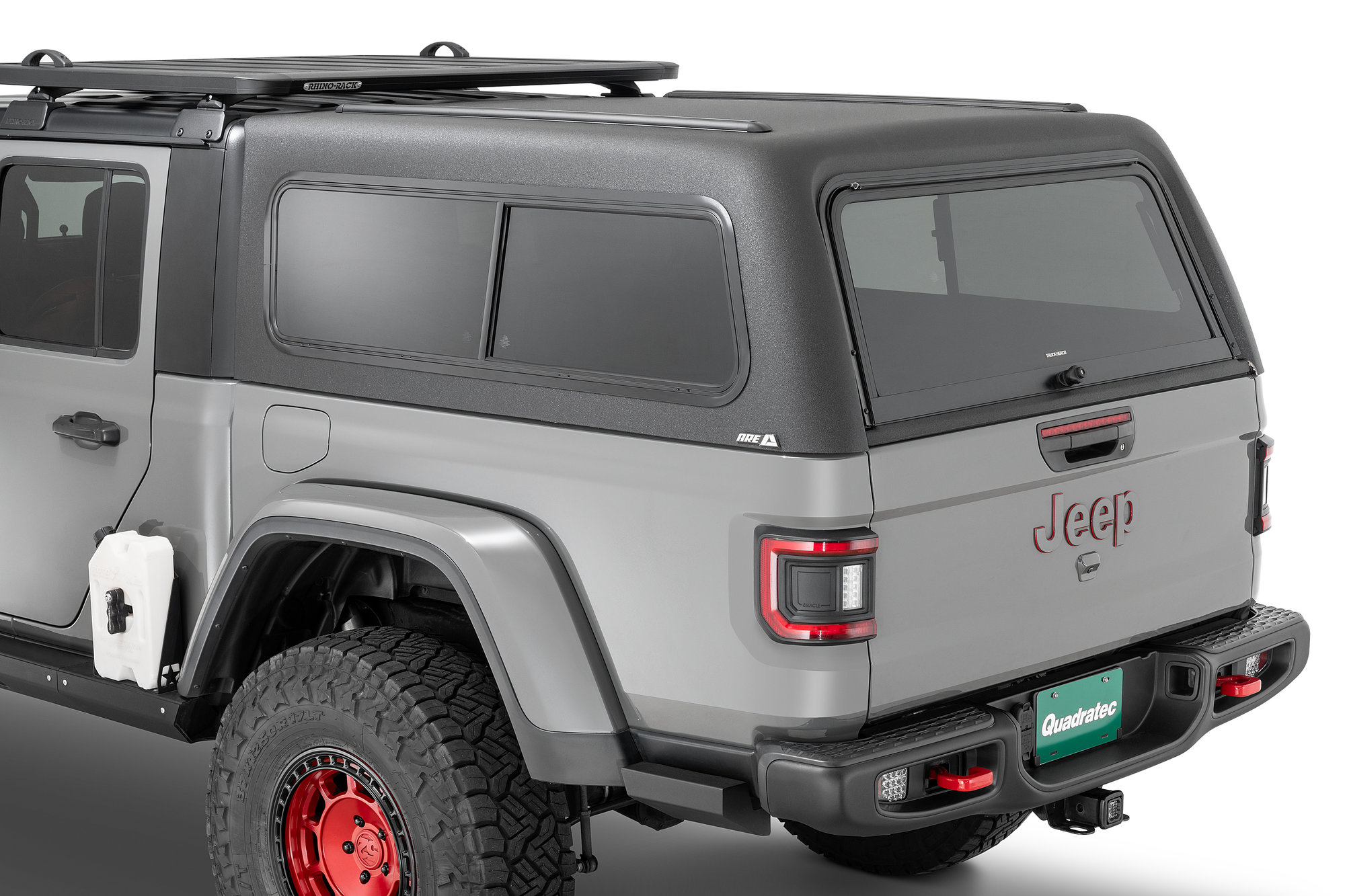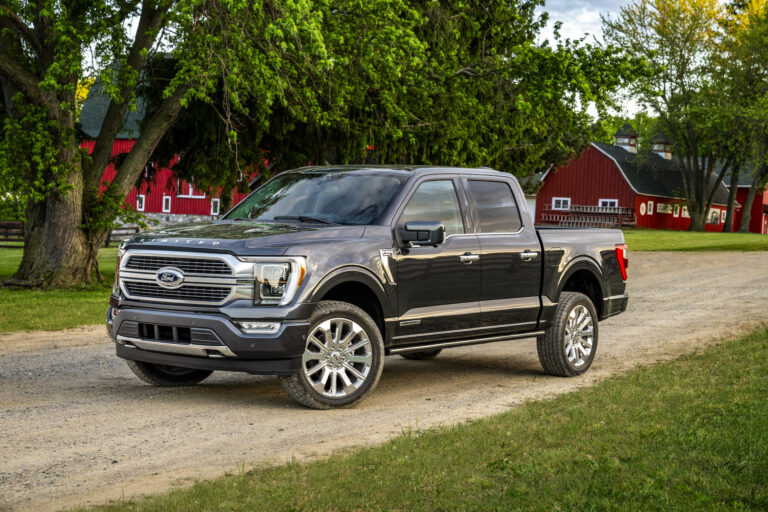How To Know If A Bed Cap Will Fit On My Truck
How To Know If A Bed Cap Will Fit On My Truck cars.truckstrend.com
Investing in a truck bed cap, also known as a truck topper or camper shell, can transform your pickup into a secure, weather-protected storage unit or even a mobile camping haven. However, the excitement of adding this versatile accessory can quickly turn into frustration if it doesn’t fit properly. A ill-fitting bed cap won’t just look bad; it can compromise security, allow water intrusion, and even damage your truck’s bed rails. The key to a successful bed cap purchase lies in meticulous measurement and understanding compatibility. This comprehensive guide will walk you through everything you need to know to ensure your new bed cap fits your truck like a glove.
The Foundation: Understanding Your Truck’s Specifics
How To Know If A Bed Cap Will Fit On My Truck
Before you even start browsing bed cap models, the most critical step is to intimately know your truck’s exact specifications. Trucks, even within the same make and model, can have significant variations that directly impact bed cap fitment.
1. Year, Make, and Model: The Basics
This is your starting point. Manufacturers design bed caps to fit specific vehicle generations. A cap designed for a 2015 Ford F-150 will likely not fit a 2020 F-150, let alone a Chevy Silverado. Always have your truck’s exact year, make, and model readily available.
2. Cab Style: More Than Just Looks
The cab style of your truck plays a subtle yet important role, primarily influencing the aesthetic flow between the cab and the cap, but also sometimes affecting the front of the bed where the cap seats. Common cab styles include:
- Regular Cab: Single row of seating, no rear doors.
- Extended Cab (or Quad Cab, SuperCab, Double Cab): Extra space behind the front seats, often with smaller, rear-hinged back doors.
- Crew Cab (or SuperCrew, CrewMax, Mega Cab): Four full-sized doors and a full back seat.
Ensure your chosen cap is designed to align with your specific cab’s profile.

3. Bed Length: The Most Obvious Fit Factor
Truck beds come in various lengths, typically categorized as:

- Short Bed: Often around 5.5 to 5.8 feet (e.g., Crew Cab short bed).
- Standard Bed: Roughly 6.5 to 6.8 feet (e.g., Extended Cab or Regular Cab standard bed).
- Long Bed: Typically 8 feet (often on Regular Cab or some Extended Cab configurations).
This is a non-negotiable measurement. A cap designed for a 6.5-foot bed will simply not fit an 8-foot bed, and vice-versa.

The Critical Measurements: How to Measure Your Truck Bed
Accurate measurements are paramount. Do not rely on advertised bed lengths alone, as these can sometimes be nominal. Use a tape measure and double-check your figures.
1. Measuring Bed Length (Inside)
- Open your tailgate.
- Measure from the inside of the bulkhead (the front wall of the bed, closest to the cab) to the inside edge of the tailgate.
- Measure along the top edge of the bed rails, not the floor, as the cap sits on the rails.
- Record this measurement precisely, down to the inch and even half-inch. Common measurements include 5’5", 6’5", and 8’0".
2. Measuring Bed Width (Inside and Outside)
- Inside Width: Measure the width of the bed from inside rail to inside rail, at the widest point (usually near the tailgate or over the wheel wells). This helps ensure the cap doesn’t interfere with cargo space.
- Outside Width (Top of Rails): Measure the width across the very top of the bed rails, from outside edge to outside edge. This is crucial for the cap’s base dimensions. Do this at the front, middle, and rear of the bed, as some beds might taper slightly.
3. Measuring Bed Rail Height
While the cap itself has a specific height (cab-high, mid-rise, etc.), the bed rail height refers to the vertical distance from the top surface of your bed rail down to the bed floor. This isn’t usually a primary fitment concern for the cap’s base (which sits on top of the rails), but it’s good to be aware of the overall depth of your bed for cargo purposes. The more critical aspect related to height is ensuring the cap’s front profile matches your cab’s height.
4. Checking for Obstructions
- Bed Liners: If you have an aftermarket drop-in bed liner, it can alter the interior dimensions and, more importantly, the shape of the bed rails where the cap will sit. Some liners have lips that extend over the rails, which might need to be trimmed or removed for a proper cap fit. Spray-in liners generally do not pose an issue.
- Toolboxes/Storage: Any permanently mounted toolboxes or storage solutions within the bed or on the rails will interfere with the cap’s installation.
- Bed Rail Caps/Protectors: Aftermarket plastic or metal rail caps can change the profile of your bed rails. Ensure the bed cap you choose can accommodate these, or be prepared to remove them.
Understanding Bed Cap Types and Their Fit Implications
While the primary fitment is dictated by your truck’s bed dimensions, understanding different cap types can help you make an informed decision and identify potential subtle fit issues.
1. Materials
- Fiberglass: Most common. Lightweight, durable, and easily painted to match your truck. Offers excellent weather protection. Generally has a smooth, finished look.
- Aluminum: Lighter than fiberglass, often more rugged and utilitarian in appearance. Popular for commercial or off-road use. May not offer the same level of finish or insulation as fiberglass.
- ABS Plastic: Less common for full caps, but used for some lightweight or budget options. Can be durable but may lack the rigidity or customizability of fiberglass.
2. Styles (Height)
- Cab-High: Designed to sit flush with the top of your truck’s cab. Offers a streamlined look and good aerodynamics. Most common choice for a clean, integrated appearance.
- Mid-Rise: Slightly taller than the cab, providing extra cargo volume without being overly bulky. A good compromise between aesthetics and utility.
- High-Rise (or Commercial/Wedge Caps): Significantly taller than the cab, maximizing internal cargo space. Often used for commercial purposes or by those needing to haul large, bulky items. Can impact aerodynamics and fuel economy more.
While the height is a design choice, the base of all these styles must conform to your truck’s bed dimensions. The main fitment implication for height is ensuring the front of the cap (where it meets the cab) has the correct profile to match your specific cab’s roofline.
Manufacturer Specifics and Compatibility Charts
The easiest and most reliable way to ensure a bed cap fits is to consult the manufacturer’s compatibility charts.
1. Official Manufacturer Websites
Leading bed cap manufacturers (e.g., ARE, Leer, Snugtop, Truxedo, Extang) have detailed "fitment guides" or "vehicle lookup tools" on their websites. You simply input your truck’s year, make, model, and bed length, and they will show you compatible caps.
2. Dealer and Retailer Expertise
Authorized dealers and specialty truck accessory shops often have extensive knowledge and proprietary fitment databases. They can guide you through the options and verify compatibility based on your truck’s VIN or detailed measurements. They also have experience with common fitment issues like bed liner interference.
3. Used Caps: Proceed with Caution
Buying a used bed cap can save money, but it significantly increases the risk of fitment issues.
- Exact Match is Key: The used cap must have come off a truck with the exact same year, make, model, cab style, and bed length as yours. Even a slight model year change can alter bed dimensions.
- Inspect Thoroughly: Check for cracks, damage, or modifications that could compromise fit or weather sealing.
- Test Fit (If Possible): If you can, arrange to test fit the used cap on your truck before purchasing.
Pre-Purchase Checks and Considerations
Beyond measurements, a few other points are worth considering before finalizing your purchase.
- Bed Rail Condition: Ensure your truck’s bed rails are straight, undamaged, and free from significant rust or corrosion. Any warping or damage can prevent a proper seal and secure fit.
- Clamping System: Understand how the cap will be clamped to your truck’s rails. Most use non-invasive clamps, but ensure your rails have space for them.
- Weather Sealing: A good fit means a good seal. Check that the cap comes with adequate weather stripping to prevent water and dust intrusion.
- Professional Installation: While some caps can be DIY installed, professional installation ensures proper sealing, secure mounting, and correct electrical connections (for interior lights, third brake lights). They also have experience dealing with minor fitment nuances.
Potential Challenges and Solutions
Even with careful planning, minor issues can arise.
- Slight Gaps or Overhangs: If measurements were off by a fraction, you might end up with small gaps or an overhang. Quality weather stripping can often seal minor gaps. For larger issues, the cap might not be the right fit.
- Bed Liner Interference: As mentioned, drop-in liners are the most common culprit. Solutions include trimming the liner’s lip (if minor) or, in some cases, removing the liner entirely if it significantly alters the rail profile.
- Older or Modified Trucks: Trucks with accident history, bodywork, or aftermarket modifications (e.g., custom beds) can have non-standard dimensions. In these cases, custom fabrication or extensive modification of a standard cap might be necessary.
- Matching Paint: While not a fitment issue, ensuring the cap’s paint color perfectly matches your truck is crucial for aesthetics. Most new caps can be ordered painted to your truck’s factory color code.
Bed Cap Fitment & General Pricing Overview
Understanding fitment is key, but it’s also helpful to have an idea of the costs involved. Prices vary widely based on material, features, brand, and installation. This table provides a general overview:
| Feature / Type | Description | Key Fitment Consideration | Estimated Price Range (USD, New, Uninstalled) |
|---|---|---|---|
| Basic Fiberglass | Cab-high, painted to match, basic windows, single lock. | Precise bed length, width, and cab profile match. | $1,500 – $2,500 |
| Mid-Range Fiberglass | Cab-high or mid-rise, painted, sliding/vented windows, interior light, carpeted headliner. | Same as basic, plus ensuring overall height aligns with aesthetic preference. | $2,500 – $3,500 |
| Premium Fiberglass | Mid-rise or high-rise, painted, remote locking, LED lighting, power windows, roof rack ready, custom options. | All bed dimensions, careful consideration of cap height relative to cab for aerodynamics/looks. | $3,500 – $5,000+ |
| Basic Aluminum | Commercial grade, utilitarian, often unpainted, basic access doors. | Durability needs, often designed for specific work truck bed sizes. | $1,200 – $2,500 |
| Commercial Aluminum | Heavy-duty, multiple access doors, interior shelving/bins, ladder racks. | Often taller, requires robust bed rails for mounting heavy loads. | $2,500 – $4,500+ |
| Used Bed Caps | Previously owned, condition varies. | CRITICAL: Must be an exact match (year, make, model, bed length, cab style) from the donor truck. Inspect thoroughly. | $300 – $1,500 (highly variable) |
| Installation (Pro) | Labor for mounting, wiring lights, sealing. | Ensures correct fit, secure mounting, and electrical safety. | $150 – $400 |
Note: Prices are estimates and can vary significantly based on brand, region, specific features, and market conditions.
Frequently Asked Questions (FAQ)
Q1: Can I put a bed cap designed for one truck brand on another (e.g., a Ford cap on a Chevy)?
A1: Almost never. Truck beds, even if they appear similar in length, have different widths, rail profiles, and bulkhead designs. A cap is custom-molded for a specific truck model’s bed.
Q2: What if my truck has a plastic drop-in bed liner?
A2: Drop-in liners are the most common fitment challenge. They often have lips that extend over the bed rails, preventing the cap from seating flush. You may need to trim the liner’s lip or, in some cases, remove the liner entirely for a proper fit and seal. Spray-in liners generally do not cause issues.
Q3: Can a bed cap be painted to match my truck?
A3: Yes, most new fiberglass bed caps can be ordered painted to your truck’s factory paint code for a seamless look. Aluminum caps are often left unpainted or powder-coated.
Q4: How do I measure my bed length accurately?
A4: Measure from the inside front of the bed (bulkhead) to the inside edge of the closed tailgate, along the top of the bed rails. Be precise, down to the inch or half-inch.
Q5: Is professional installation necessary?
A5: While some people opt for DIY, professional installation is highly recommended. It ensures the cap is properly sealed against weather, securely clamped to prevent movement, and all electrical components (like the third brake light or interior lights) are wired correctly and safely.
Q6: Will a bed cap affect my truck’s fuel economy?
A6: Generally, a well-fitting, aerodynamic cab-high bed cap can slightly improve or have a negligible effect on fuel economy by smoothing airflow over the bed. Taller or less aerodynamic caps (like high-rise commercial caps) may slightly decrease fuel economy.
Conclusion
Choosing and fitting a bed cap correctly is a straightforward process when approached systematically. By meticulously measuring your truck’s bed, understanding the nuances of different bed cap types, and leveraging manufacturer compatibility charts, you can confidently select a cap that not only meets your needs but also fits perfectly. A proper fit ensures maximum protection for your cargo, enhances your truck’s aesthetics, and provides long-lasting utility. Don’t rush the measurement process, and when in doubt, consult with experienced truck accessory professionals. Your truck—and your gear—will thank you for it.






